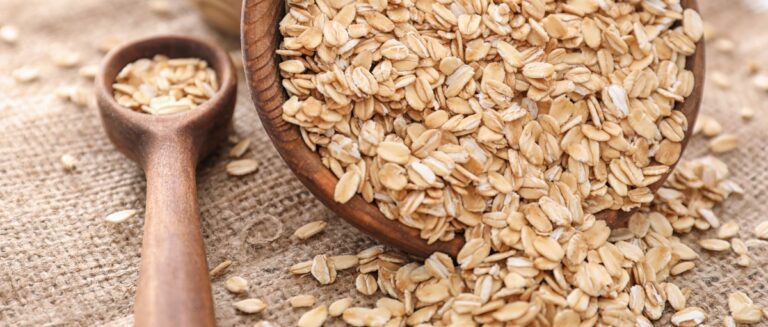Does it feel like you’re constantly bundling up while everyone else looks perfectly comfortable? Do you crank up the thermostat only to have your family complain they’re sweltering? If you seem to be cold all the time, you’re not alone. Research suggests that over 11% of people may experience excessive sensitivity to cold, also known as “cold intolerance.” If you’ve ever asked yourself, “Why do I get cold so easily?”, you’re not alone.
While some folks just naturally run a bit colder than others, always feeling chilled to the bone can indicate an underlying health issue. Conditions like anemia, which affects over 3 million Americans, and hypothyroidism, impacting about 5% of the population, are among the most common culprits.
The good news is that there’s no need to resign to a life spent huddled by the heater. We’ll look into the biological and lifestyle factors that could be dialing down your internal thermostat. More importantly, we’ll share practical tips on what you can do to stop the shivers, from simple changes like dressing in layers to treating underlying medical conditions.
If you’re tired of constantly feeling like an ice cube, we’ll explain how to thaw out safely. Whether you’re experiencing cold intolerance yourself or are concerned about a loved one who can’t seem to stop shaking, we’ll provide the insights and solutions you need to take control of your temperature.
Medical Conditions That Can Cause Cold Intolerance
So, why am I always cold? Feeling cold all the time can be a symptom of several common medical conditions. While this list isn’t exhaustive, these are some of the top health issues to be aware of if you can’t seem to shake the chills:
Anemia
Anemia is a condition in which the body lacks enough healthy red blood cells to carry adequate oxygen to the body’s tissues. The body can’t generate enough heat without sufficient oxygen, leading to cold intolerance. There are several types of anemia, including iron deficiency anemia and vitamin deficiency anemia.
In addition to feeling cold, other symptoms of anemia may include:
- Fatigue and weakness
- Pale or yellowish skin
- Shortness of breath
- Headaches
- Dizziness or lightheadedness
Hypothyroidism
Hypothyroidism, or an underactive thyroid gland, means your body isn’t producing enough thyroid hormone. This hormone plays a key role in regulating metabolism and body temperature. When thyroid levels are low, the metabolic rate slows down, making it harder to generate and maintain heat.
Other signs of hypothyroidism include:
- Weight gain
- Fatigue
- Dry skin and thinning hair
- Heavy or irregular menstrual periods
- Constipation
- Slowed heart rate
Diabetes
Both type 1 and type 2 diabetes are more susceptible to cold stress and intolerance, often as a result of complications like kidney damage or neuropathy. Diabetic nephropathy impairs the kidneys’ ability to function, which can cause a buildup of waste products in the blood. That, in turn, could lower body temperature. Diabetic neuropathy refers to nerve damage that can affect sensation and make it harder for the body to detect and respond to cold.
Circulatory Issues
Problems with blood flow and circulation can leave extremities like the hands and feet feeling chilled. Raynaud’s disease or phenomenon causes the small blood vessels in the fingers and toes to narrow in response to cold, limiting blood supply. Peripheral artery disease (PAD) involves a narrowing of the arteries due to plaque buildup, reducing blood flow to the limbs.
Other Medical Factors
Some other health conditions and treatments that may contribute to cold intolerance include:
- Vitamin B12 deficiency, up to 15% of the population is deficient in this vitamin
- Eating disorders like anorexia
- Certain medications, such as beta blockers
If you suspect an underlying medical issue could be causing your constant coldness, it’s important to see a healthcare provider. They can run tests, diagnose properly, and recommend appropriate treatment. In many cases, managing the root condition can greatly improve or resolve cold intolerance.
Biological Factors That Influence Cold Sensitivity
In addition to medical conditions, some biological factors can make certain individuals more sensitive to cold temperatures. Hormonal fluctuations may explain why some people are more prone to feeling cold during certain times of the month. Two key factors to consider are gender differences and the natural effects of aging.
Gender Differences
On average, people who were assigned female at birth tend to feel colder than those assigned male. This difference can be attributed to a few key biological variations:
- Hormones: Estrogen, the primary female sex hormone, is believed to make women more sensitive to cold. Estrogen can cause blood vessels to constrict, reducing blood flow to the extremities and leading to a chilled sensation. Fluctuations in estrogen levels during menstrual cycles or menopause may also contribute to cold intolerance.
- Metabolism: Women typically have slower metabolic rates than men, which could mean they don’t generate heat as quickly. This difference in metabolism is partly due to body composition, as women often have a higher ratio of body fat to muscle mass compared to men. Muscle tissue burns more calories and generates more heat than fat tissue.
- Body size: On average, people with smaller bodies have higher surface area-to-volume ratios, meaning they lose heat more quickly than those with larger frames. Since women tend to be smaller than men, they may feel the cold more acutely.
Aging and Temperature Sensitivity
As people get older, they may find themselves reaching for an extra layer more often. There are a few reasons why aging can make us more sensitive to cold:
- Slowed metabolism: Metabolic rate naturally declines with age at the rate of 10% each decade after age 20, partly due to hormonal changes and loss of muscle mass. This means the body generates less heat at rest, which can lead to feeling colder.
- Decreased circulation: Age-related changes to the cardiovascular system, such as stiffer blood vessels and high blood pressure, can reduce blood flow and make it harder for the body to distribute blood evenly. This is why many older adults complain of cold hands and feet.
- Impaired temperature regulation: The hypothalamus, the part of the brain responsible for regulating body temperature, may become less sensitive with age. This can make it harder for the body to detect and respond to changes in ambient temperature.
While feeling a bit colder with age is normal, persistent or severe cold intolerance should be discussed with a healthcare provider. It could be a sign of an underlying health issue that needs attention, such as a thyroid disorder or peripheral artery disease.
Lifestyle Habits and Environmental Factors
While medical conditions and biological differences account for many cases of cold intolerance, certain lifestyle factors can also make you feel chillier than usual. Here are a few key areas to consider:
- Body Composition and Weight: Having a low body mass index (BMI) or very little body fat can make you more prone to feeling cold. Body fat acts as an insulator, helping to retain heat. Conversely, muscle has a higher specific heat than fat, so having a higher muscle mass can keep you warmer. Being significantly underweight or having a very low body fat percentage due to excessive dieting, eating disorders, or certain health conditions can lead to constant coldness.
- Sleep Deprivation: Believe it or not, lack of sleep can make you feel colder. Research has shown that sleep deprivation impairs the body’s ability to regulate heat. Aiming for 7-9 hours of quality sleep per night can help keep your internal thermostat running smoothly.
- Nutritional Deficiencies: If you’re cold and tired all the time, it may be a sign your body isn’t getting the nutrients, such as iron and B vitamins, which play important roles in maintaining healthy metabolism. Deficiencies in these nutrients can lead to anemia and other conditions that cause cold intolerance. Consuming a balanced diet with plenty of fruits, vegetables, lean proteins, and whole grains can help ensure you’re getting the nutrients you need to stay warm and energized.
- Cold Environments and Humidity: Spending time in cold environments can make anyone feel chilly, but some people are more sensitive to temperature and humidity changes than others. If you work in a cold office, live in a drafty house, or spend a lot of time in air-conditioned spaces, you may find yourself shivering more often. Dampness can also intensify the perception of cold, as moisture conducts heat away from the body more quickly.
When to See a Doctor and What to Expect
If you’re asking yourself, “Why do I get cold so easily?” it might indicate an underlying health issue. If you regularly feel colder than those around you or if the coldness disrupts your daily activities, it’s essential to consult your healthcare provider. Persistently feeling chilled could indicate an underlying health problem that needs attention.
Your doctor will likely start by asking about your symptoms, medical history, and lifestyle habits. They may then perform a physical exam and order blood tests to check for conditions like anemia, hypothyroidism, or diabetes. Depending on your specific symptoms and risk factors, additional tests, such as imaging scans or nerve conduction studies, may be recommended.
Treatment for cold intolerance will depend on the underlying cause. For example, if you’re diagnosed with hypothyroidism, your doctor may prescribe synthetic thyroid hormone to restore your levels to normal. If poor circulation is to blame, lifestyle changes like exercising regularly, quitting smoking, and managing blood sugar can help. In some cases, medications that improve blood flow or reduce inflammation may be necessary.
Practical Tips for Staying Warm
In addition to addressing any underlying health issues, there are several simple steps you can take to feel more comfortable in cold environments:
- Dress in layers: Multiple thin layers of clothing trap heat more effectively than a single thick layer. Choose materials like wool or fleece that provide insulation.
- Protect extremities: Wear gloves, thick socks, and a hat or earmuffs to prevent heat loss from your hands, feet, and head.
- Keep your home cozy: Set your thermostat to a comfortable temperature, seal drafts around windows and doors, and consider using a humidifier to add moisture to dry, heated air.
- Enjoy warm foods and drinks: Sipping herbal tea, broth-based soups, or other hot beverages can help boost your warmth. Eating warm, nourishing meals can also help raise your core temperature.
- Stay active: Engaging in regular physical activity helps improve circulation, build muscle mass, and generate body heat. Even brief bouts of exercise like walking or climbing stairs can make a difference.
Finding Your Ideal Temperature
Always feeling colder than everyone else can be frustrating and uncomfortable, but it doesn’t have to be permanent. By understanding the various factors that influence temperature sensitivity and taking proactive steps to address them, you can finally feel more comfortable and enjoy life at a more suitable temperature.
If you suspect a medical condition is at the root of your cold intolerance, don’t hesitate to seek professional guidance. With proper treatment and self-care strategies, you can improve your symptoms and boost your overall well-being.
Remember, you don’t have to settle for constantly feeling chilled—a warmer, more comfortable life awaits. So the next time you ask, “Why do I get cold so easily?”, consider both lifestyle and medical factors.
Sources
Nature. (2022). Mechanisms of disease progression in hypothyroidism. Retrieved from https://www.nature.com/articles/s41598-022-21842-9
American Society of Hematology. (n.d.). Anemia: Causes and treatments. Retrieved from https://www.hematology.org/education/patients/anemia
National Institute of Diabetes and Digestive and Kidney Diseases (NIDDK). (n.d.). Hypothyroidism. Retrieved from https://www.niddk.nih.gov/health-information/endocrine-diseases/hypothyroidism
Cleveland Clinic. (2020). Hypothyroidism: Causes and symptoms. Retrieved from https://my.clevelandclinic.org/health/diseases/12120-hypothyroidism
National Center for Biotechnology Information (NCBI). (2016). Thyroid disease and its impact on metabolism. Retrieved from https://www.ncbi.nlm.nih.gov/pmc/articles/PMC4861190/
Mayo Clinic. (2022). Diabetic nephropathy: Symptoms and causes. Retrieved from https://www.mayoclinic.org/diseases-conditions/diabetic-nephropathy/symptoms-causes/syc-20354556
Mayo Clinic. (2023). Raynaud’s disease: Symptoms and causes. Retrieved from https://www.mayoclinic.org/diseases-conditions/raynauds-disease/symptoms-causes/syc-20363571
MedlinePlus. (n.d.). Anorexia nervosa: Causes and treatment. Retrieved from https://medlineplus.gov/ency/article/000170.htm
Central Drugs. (n.d.). 9 common signs of vitamin deficiency. Retrieved from https://www.centraldrugsrx.com/learn/9-common-signs-you-are-vitamin-deficient
National Health Service (NHS). (2024). Anorexia nervosa: Symptoms and diagnosis. Retrieved from https://www.nhs.uk/mental-health/conditions/anorexia/symptoms/
British Heart Foundation (BHF). (n.d.). Beta blockers: What you need to know. Retrieved from https://www.bhf.org.uk/informationsupport/heart-matters-magazine/medical/drug-cabinet/beta-blockers
McGill Office for Science and Society. (2023). Why am I always cold? Retrieved from https://www.mcgill.ca/oss/article/health/i-am-woman-why-am-i-always-so-cold
PubMed. (n.d.). Cold exposure and metabolism in women. Retrieved from https://pubmed.ncbi.nlm.nih.gov/8125870/
Study.com. (n.d.). Why large bodies lose less heat than smaller bodies. Retrieved from https://homework.study.com/explanation/large-bodies-lose-a-smaller-percentage-of-heat-to-their-surroundings-than-smaller-bodies-why.html
Piedmont Healthcare. (n.d.). Why metabolism slows as you age. Retrieved from https://www.piedmont.org/living-real-change/why-metabolism-slows-as-you-age
MedlinePlus. (n.d.). Metabolism tests. Retrieved from https://medlineplus.gov/ency/article/004006.htm
ScienceDirect. (2022). Heat regulation and metabolism in cold environments. Retrieved from https://www.sciencedirect.com/science/article/pii/S0166223622001928
Cleveland Clinic. (2022). Adipose tissue: What is body fat? Retrieved from https://my.clevelandclinic.org/health/body/24052-adipose-tissue-body-fat
ScienceDirect. (2023). Effects of environmental factors on body fat distribution. Retrieved from https://www.sciencedirect.com/science/article/abs/pii/S0360132323006704
PubMed. (2020). The impact of body fat on metabolic health. Retrieved from https://pubmed.ncbi.nlm.nih.gov/32363754/
ScienceDirect. (n.d.). Iron metabolism and its clinical implications. Retrieved from https://www.sciencedirect.com/topics/medicine-and-dentistry/iron-metabolism
Medical News Today. (2019). What to know about iron deficiency. Retrieved from https://www.medicalnewstoday.com/articles/325292
National Center for Biotechnology Information (NCBI). (2019). Iron metabolism and disorders of iron homeostasis. Retrieved from https://www.ncbi.nlm.nih.gov/pmc/articles/PMC6555564/











